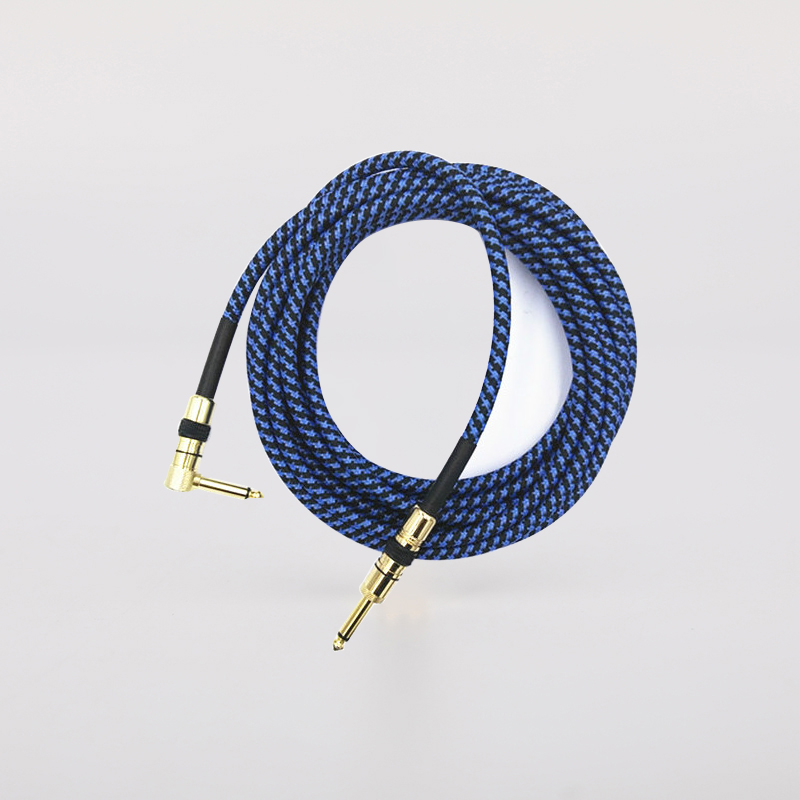No matter how good the guitar cable is, it will not have a good effect if it is used in the wrong equipment connection, so it is very necessary to figure out the correct signal matching method.
The input signal specification of the equipment connected to the electric guitar is about 10dB/250mV/1M ohm (hereinafter referred to as G signal), and the guitar input interface of any effector or speaker is designed with this specification. Therefore, no matter how it is connected in series, the guitar input ports of all devices should get a signal equivalent to the G signal strength. When cascading pedals, the output gain (namely volume) of each pedal should be as close as possible to the G signal strength to avoid overloading the next pedal.
The pedal effector should not be directly connected to general audio signal input devices such as mixers and recording cards (hereinafter referred to as S signals). If you need to connect in this way, you should use a direct box to match the signal to the S signal strength.

Generally, synthesizers have dedicated output ports for connecting devices that require G signal or S signal input. For example, AX1500g has a 1/4" interface for connecting a guitar amp, and a headphone jack for connecting to a mixer, etc.; Zoom 707 can set the output interface to connect to the type of equipment. For specific operations, please refer to the effector manual .There are also some special cases. For example, Digitech’s X series pedal effector has built-in speaker simulation function, and has an S signal output interface for connecting a mixer or recording card. Generally, such special equipment has obvious instructions on the package Most rack-mounted effectors have both G signal and S signal input interfaces, and a qualified sound engineer will choose the correct interface for you. Some guitar speakers have two input interfaces, high impedance/low impedance, and high impedance is generally used for connection Guitars, low-impedance connection effects, etc. High-quality speakers and some synthetic effects have "Effects loop" function (that is, send and return two interfaces), and are generally designed as an external G signal strength effect. On the mixer" The "Effects Loop" function is generally designed for S signal strength. But no, please refer to the corresponding introduction in the manual.
If the effector is too far away from the mixer, it is better to use the balanced 1/4" output of the effector or balanced XLR output (if available), which can effectively avoid signal attenuation and noise. Too long XLR cables are not easy to buy It can be customized when you buy the effector. If you don’t have a balanced output interface, you should use a synthetic effector and other equipment near the guitarist to boost the signal and then transmit it over a long distance. For example, use a synthetic effector, guitar The distance between the hand and the mixer is 15 meters. You should use a 3-meter cable to connect the guitar and the synthesizer, and 12 meters to connect the effector and the mixer. The same distance is 15 meters. If you use a stomp, the guitar and the effects, the effects and the A 3-meter cable should be used between the guitar amps. If the volume of the guitar amp is not enough, you should use a microphone to pick up the guitar amp and connect it to the mixer. The guitar amp should not be placed too far away from the pedal.
Although many guitarists want to get beautiful sounds and effects, some people tend to ignore the most important part-the wire. Speaking of this, many people may think that we have made some fuss, but the fact is that it is. Different wires can have a very big impact on your voice, and in some cases, these effects are huge. Even if you use the same speaker or pickup, different cables will make your voice sound different. So it is not difficult to understand why some guitarists insist on using fixed pickups, cables and speakers, so you need to understand the differences between different cables and learn how to make up for these mistakes.